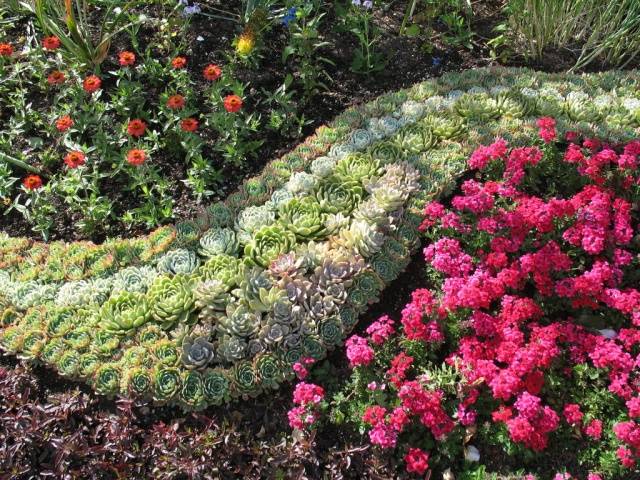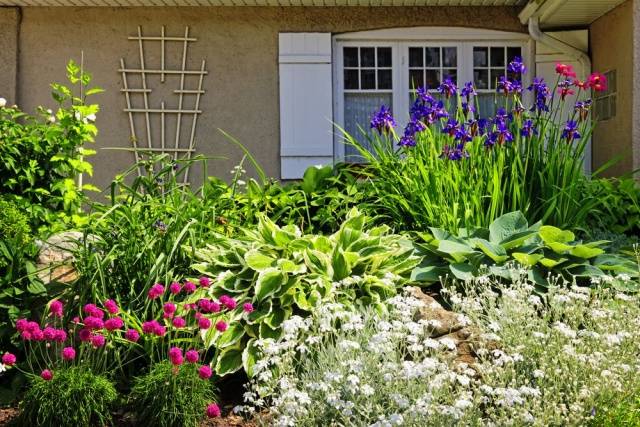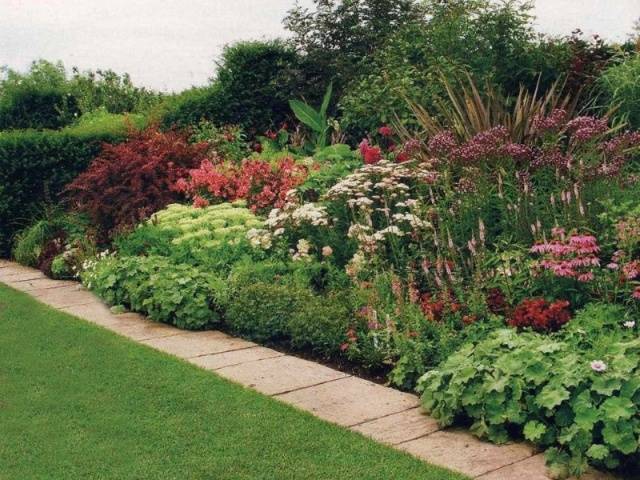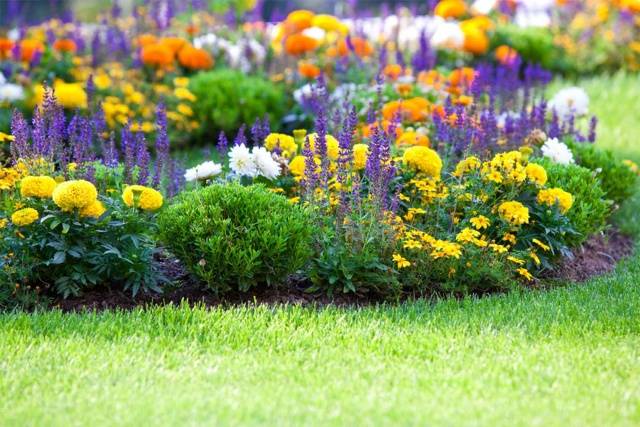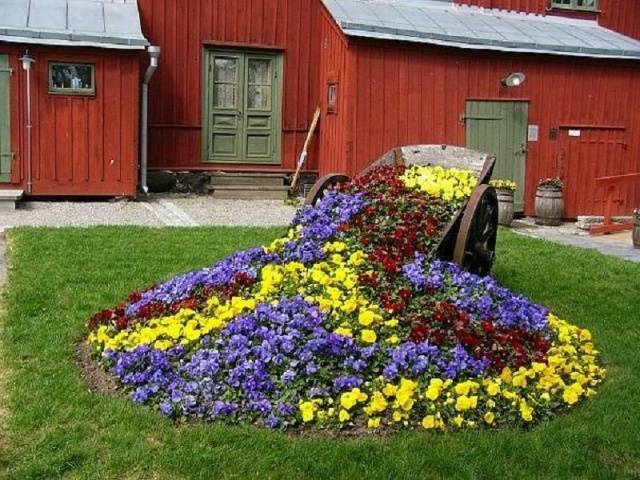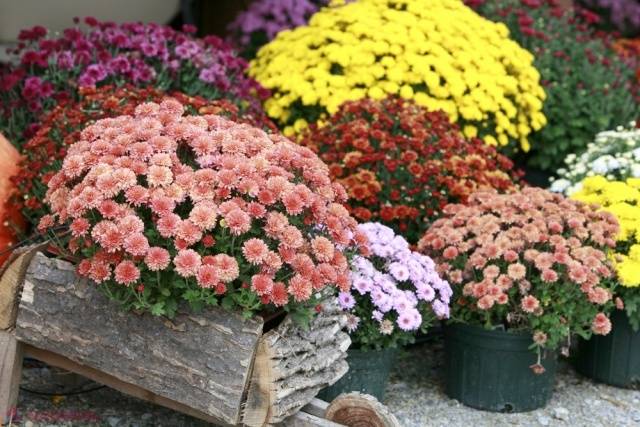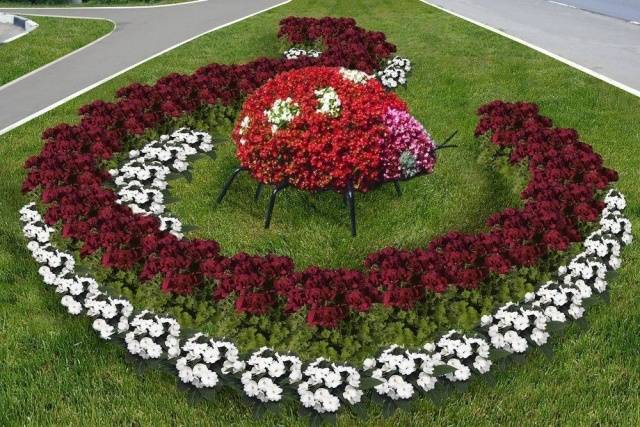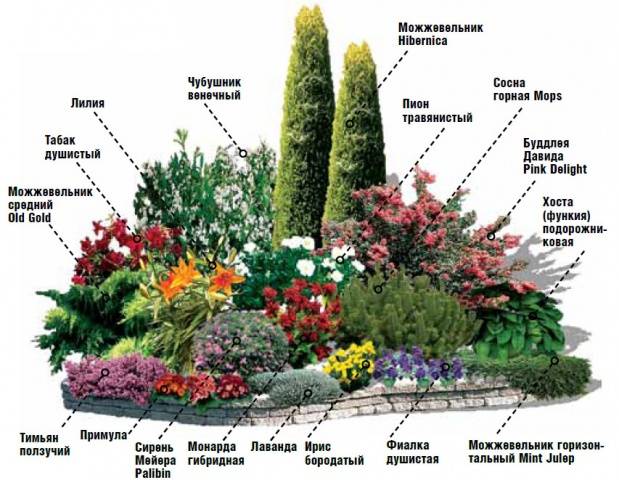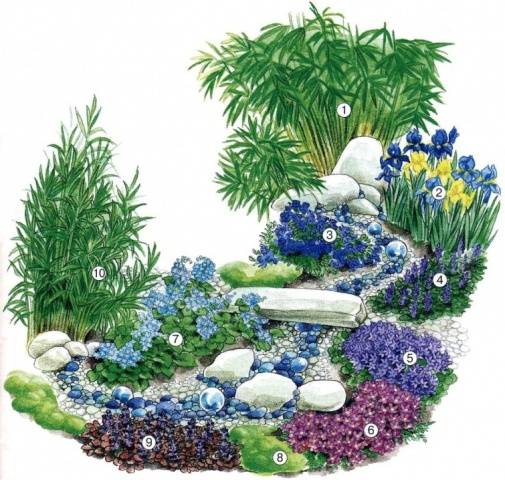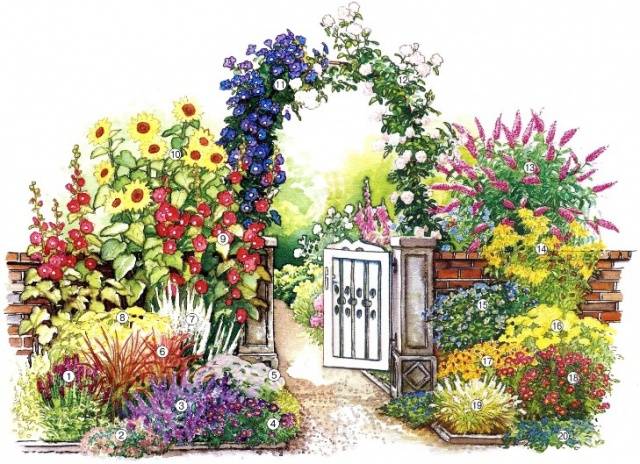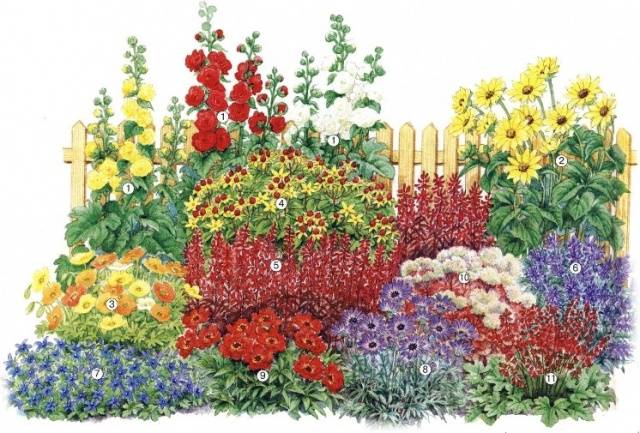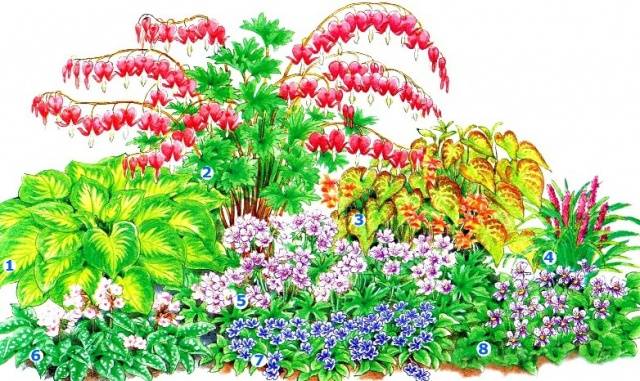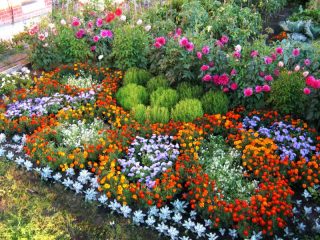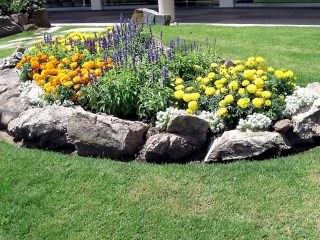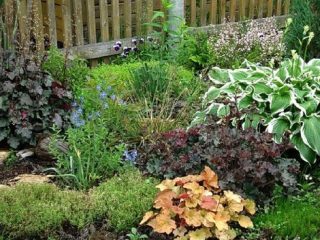Content
A flower bed that blooms throughout the warm season is the dream of, perhaps, every grower. Flower beds formed from perennials have a number of advantages over their counterparts, on which annuals are planted. The flowering process in flower beds, on which perennial representatives of the flora are planted, will be renewed annually. At the same time, all that a gardener will need to do is water, prune and feed the plants on time.
This article will discuss how to form a continuous flowering flower bed from perennials, flower garden schemes will be provided, and the nuances that need to be taken into account when planting flowers will be described. But first, we suggest you find out what perennial flowers can be planted in a flower bed.
Categories of perennials
All flowering plants, from which compositions are created on the landscape, are divided into 3 categories: undersized, medium-sized and tall. Let's take a look at each category separately.
Undersized
The first category includes flowers, the growth of which does not exceed 30 cm. They are most often used to create colored carpets. Among the undersized flowering perennials includes:
- phloxes;
- dwarf asters;
- aquilegia;
- obriety;
- gentian;
- Carpathian bells;
- soapworms.
When planting low-growing perennials, it is important to follow some rules:
- Low-growing flowers are best planted on the sunny side. If you ignore this moment, then you should not expect lush flowering.
- For plants to bloom well, they need to be fed with flower fertilizers, while nitrogen fertilization should be minimized. The fact is that the latter contribute to an increase in green mass, not flowering.
- To flower bed with undersized flowers looked attractive, plants need to be planted close to each other.
- Low-growing representatives of the flora require careful care and timely weeding weeds... And the point here is not only in the aesthetic appeal of the flower bed, but also in the fact that weeds are destructive for undersized perennial flowers.
Medium-sized
The category of medium-sized flowers includes flowers whose growth reaches 30–80 cm. With their help, you can arrange a tiered flower bed or mono song. Among the medium-sized perennials are the following:
- peonies;
- the radio is pink;
- day-lily;
- roses;
- yarrow.
When planting medium-sized plants, you need to leave some distance between them, since they grow more than their undersized counterparts.
Tall
All flowers with a height of more than 80 cm are called tall representatives of the flora or giants. When decorating an island flower bed, you cannot do without tall perennials. This category includes the following flowers:
- basilis;
- mallow;
- winding sunflowers;
- slopes;
- stock-roses.
Advantages and features of continuous flowering beds
In order for a flower garden of this type to always look good and delight you, it is important to take into account some nuances when planting plants. A bright and dense flower bed can only turn out on an area flooded with sunny color. Therefore, the first thing to do is to choose the sunny side of the landscape for the flower bed.After that, distribute the flower beds into zones with the names of the plants that you will plant on each of them. So, you can ensure the constant flowering of the flower bed.
Continuous flowering perennial flower beds and gardens have a number of advantages:
- The first and, perhaps, the main advantage of such a flower bed or garden is durability.
- Simplicity of care, which consists in weeding, watering and feeding the plants.
- Long bloom - throughout the warm season.
- Seeds or seedlings of annuals need to be bought annually, while funds are invested in perennials once.
- Usually perennials are unpretentious and can grow both in the sun and in partial shade or even in the shade.
- Perennials do not drain the soil.
Selection of plants by seasons
Flower garden schemes are created depending on what effect you want to achieve. This is clearly seen in the photos provided in the following subsections of the article. Floral arrangements are usually named in tune with the seasons.
Tenderness of spring
The most delicate flowers bloom first after winter. In the spring flower bed, primroses, crocuses, daisies, pansies must be present, tulips, daffodils and lungwort. These perennials usually bloom in early spring and are pleasing to the eye for a month. They are replaced in May by late varieties of tulips, peonies, lupines and aquilegia. By the end of May, imperial hazel grouses, hyacinths and others are already gradually beginning to bloom.
Summer taste in a flower bed
In the summer, you can already find much more flower arrangements in the flower beds. Among them are amaranths, hibiscus, marigolds, roses, levkoi, hydrangeas, zinnias, delphiniums and liatrices.
When creating a flower bed of continuous flowering from perennials, you can add to the list of plants and lilies, Echinacea, Rudbeckia, Monarda and Yasnotka. With proper care, you can not only enjoy the pleasing appearance of these flowers, but also savor their wonderful scents throughout the summer.
Autumn colors on a flower bed
The flower arrangement will not be complete if you do not plant autumn flowers on the flower bed, which replace summer ones. In autumn, autumn perennials of continuous flowering such as carnations, ageratum, begonia and remontant roses bloom on the flower beds. To return the bright colors of summer to the flower bed, you should find a place to plant coreopsis, asters, sage, helenium and sedum. Yarrow, ornamental onions and craspedia can withstand almost frost.
Development of a flower garden scheme
If you have to make a flower bed in an open summer cottage and you have a rather large area at your disposal, then the flower bed design scheme may look like this:
- Tall perennials are planted in the center of the composition.
- Farther from the center there are medium-sized flowers.
- Closer to the edge - a rug of low-growing perennials.
When choosing shades of plants that will grow in a flower bed, it is important that their compatibility with each other is not disturbed. Even on the most ordinary flower bed, you can place bright accents.
If your flower bed will be located near a fence or fence, then the tallest plants can be planted closer to it. The height of the composition in this case will decrease as the flower garden spreads to the territory near the house.
Before making a flower garden, we suggest that you familiarize yourself with the basic design schemes for flower beds, thanks to which you will create your unique masterpiece. These schemes can be a base or starting point for aspiring florists.
Selection of colors
Before creating a continuous flowering flower bed, it is also important to identify the dominant colors. As a rule, there are warm and bright colors in the flower beds.The background for such a palette is often blue or purple.
So, we suggest that you familiarize yourself with several rules for choosing a color palette for a flower bed:
- For perennials to please the eye, it is important to choose contrasting colorseg yellow with blue / purple or red with green. If you have a large flower bed, then the plants should be planted in large groups. Otherwise, the flower bed will look ugly from afar.
- If the flower garden is part of a recreation area, then make it more neutralfor example, plant blue with purple or red flowers. Thus, compositions are created that are calm and do not excite unnecessary emotions.
- Gray, black and white shades can be combined with any color palette... Variegated and bright compositions of constant flowering can be diluted white flowers... To emphasize the shades, black flowers can be planted in the flower bed. Plants with grayish foliage can be planted as a background.
- Plants in pastel shades will help you create a dreamy and romantic atmosphere in your territory.
- Look very interesting one-color flower beds of different shades.
- It is worth noting that warm shades, as you know, visually reduce, and coldon the contrary, they increase.
- To decorate the flowerbed before and after flowering, you can plant on it plants with beautiful leaves.
Ready-made schemes
The best flower bed is one that you have designed yourself, however, it is important to adhere to some basic rules. Next, we will consider standard planting schemes for decorating a dry stream, you will also learn about decorating a gate with flowers, a flower bed in partial shade and a flower garden of fast-growing plants.
Creek illusion
If for some reason you cannot make a fountain or a stream on your site, but you really want to create something similar, then as an option you can make a dry source. If you do all the work on the manufacture and design of a dry stream, then the illusion of a living source will be created.
The bed is laid out from elongated pebbles of different sizes. Transparent blue beads will create the illusion of a stream and from afar it will seem that water is really running through it.
To make a dry stream attractive, you can make a flower garden of continuous flowering to decorate it. The landing is carried out according to the scheme shown in the photo:
- The bamboo grate gives the stream a natural look, although it is not a flowering plant. This plant is found in many water sources. You can replace it with an ostrich.
- Bearded irises are planted at the mouth of the stream.
- Lobelia looks good against irises.
- Near the irises, you can plant a creeping tenacious.
- Poskharsky's bell will perfectly fit into the bed of a dry stream.
- A beautiful and smooth transition from one shade to another will help create hybrids of shades.
- Opposite the obriety, on the left edge you can plant any large-leaved plant with bright flowers. It can be a large-leaved brunner.
- Opposite the brunner, the awl-leaved bryozoan will look great.
- The red creeping tenacious will be an excellent completion of the flower arrangement, provided for the design of a dry stream.
- The final plant should also be non-flowering, for example, the same bamboo grate or ostrich.
Take this scheme as a basis and do something unique in your backyard.
Perennials wicket decoration
If you have an arched gate on your site, then perennials can be planted near it, organizing everything so that the arch is entwined with flowering plants. By choosing the right flowers, you can enjoy the blooming arch throughout the warm season.
To begin with, perennials for continuous flowering beds should be divided into tiers, as shown in the photo.
- The first tier will consist of low-growing stands.These can be Pozharsky's bells (20), stonecrop creak (5), cushion aster (3), oak sage (9), foxtail pinnate (19), stonecrop (2).
- The middle tier consists of yellow yarrows (8 and 16). Further, closer to the gate on the left side, you need to plant higher flowers, for example, spikelet liatris (1), long-leaved veronica (7) and rod-shaped millet (6). On the right side, closer to the gate, chamomile-shaped flowers will be planted - pillow aster (18), new Belgian rudbeckia (15) and brilliant (17).
- Tall plants are planted on the last tier, with which you can close a low fence. So, in order to create a beautiful composition in the background, you should plant a stock-rose (9), a sunflower (10), David's budley (13) and a glossy rudbeckia (14).
And this composition will complete the planting of climbing plants, which the arch will be braided with. For this, you can plant on one side clematis Zhakman (11), and on the other - a climbing rose (12). You can create a flowerbed of continuous flowering at the fence from any material, since such a composition is universal and will harmoniously fit into any exterior.
A flower bed of fast-growing plantings
If you already got down to business, then you want to see the fruit of your labor as early as possible. This is also true in the case of planting a beautiful flower bed. Of course, perennials are unlikely to bloom magnificently in the first year after planting, but still this can be achieved. But in this case, it is important to create a flower bed on the light side of the site so that the plants are warm. This mixborder looks great next to a fence, coniferous plantings or a wall.
The planting scheme for perennials will be slightly different from the previous one, although, as you can see in the photo, it is in no way inferior to other flower beds in beauty:
- The upper tier can be planted with stock roses of different colors.
- A decorative sunflower can be placed near the stock roses.
- Icelandic poppies will look good on the middle tier.
- Gaillardia can be planted near poppies.
- Lobelia cardinal will help you to make a bright accent, passing through the entire flower bed with a red ribbon.
- To make the composition deeper, you need to add blue shades to it. To do this, you can plant a catnip.
- The next will be Poskharsky's bell.
- A blue katananche will be planted on the edge.
- You can supplement the composition with low-growing plants, for example, gravilat.
- The sedum will delight the eye with its beauty until autumn.
- And the final note of the composition of perennials - Heuchera.
The care of these plants is the same, which will allow you to keep the flower bed in order without much effort. So, you can hide an ugly structure or a blank wall.
Making a flower bed in partial shade
If you do not have a sunny area for planting a flower bed, then do not despair, you can form it in partial shade. The following diagram will help you come up with a beautiful flower garden from perennials in partial shade.
The concept behind this scheme is to effectively combine vibrant flowering plants with luscious greenery. So, you can dilute the dull landscape. As a green space against the background of a flower bed, you can plant a funkia (1). You can also supplement the flower bed with background flowers with the help of a magnificent dicenter (2), it blooms in May and looks quite impressive. And the final background plant is the red epimedium (3), which has bright yellow-red leaves. Closer to the middle tier, there is a muskarevid lyriope (4).
From early May to October, your flower bed will sparkle with special colors if you plant geraniums on it (5), and lungwort (6) will help to dilute the composition. In the foreground, the spring navel (7) will look good, and violets (8) will replace it.
Conclusion
Instructions for planting plants for forming a flower bed of perennials and the schemes proposed in the article will help you create your own masterpiece that will delight you and your friends throughout the warm season.And in conclusion, we suggest you watch a video on the planting of perennials when forming a flower bed of continuous flowering:

